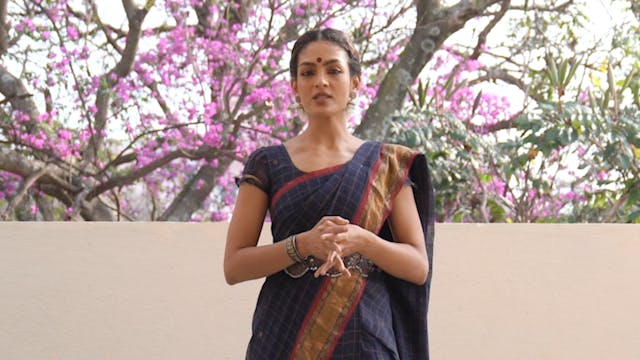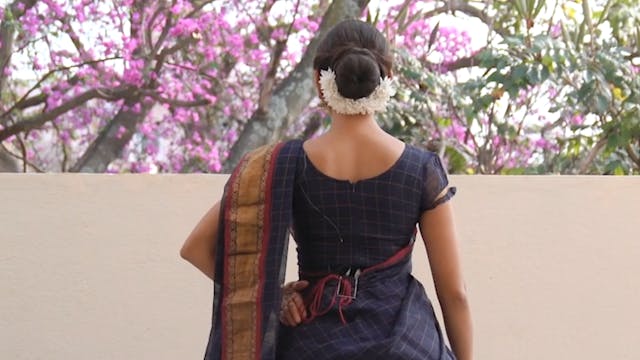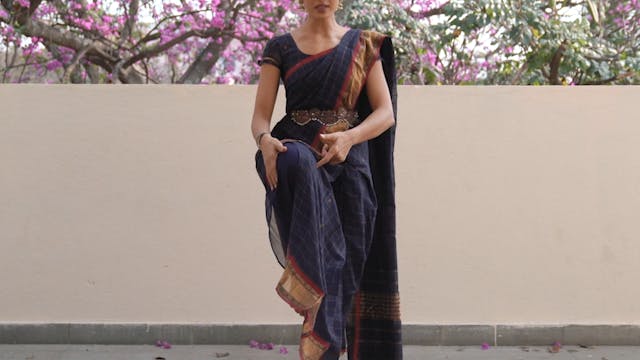Jānu bheda according to the Sangīta Ratnākara, is an Upānga. The knees are considered one of the minor limbs.
The movements of the knees are used not only for the precise control in the execution of Nritta but also to communicate meaning in the context of gesture. Some of the positions elucidated in the Jānu bheda are subsequently elucidated as one of the main positions of movement origin in the Abhinaya Darpana.
Please refer to the Shloka below for pronunciation. Please note that the separate movements of the head when put together in a Shloka form 'Sandhis', or compound words in the Sanskrit language. Words like 'ca', 'thatha', mean "and", "also". The separate words for each movement are also given below the shloka
Samhatam kuñcitam cārdhakuñcitam natamunnatam
Vivrttam samamityukte jānu saptavidham budhaih
Samhata
Kuñcita
Ardha Kuñcita
Nata
Unnata
Vivrtta
Sama
Up Next in Natyashastra: Angas & Upangas
-
Ūru bheda Introduction
Explains the things to keep in mind when executing the thigh movements. Please watch carefully before practising with the shloka.
-
Ūru bheda Shloka
The thighs are considered one of the Upāngas, or minor limbs according to the Natyashastra.
The movements of the thighs are used not only for the precise control in the execution of Nritta but also to communicate meaning in the context of gesture.
Please refer to the Shloka below for pronunciat...
-
Janghā bheda Introduction
Explains the things to keep in mind when executing the movements of the shank/shin. Please watch carefully before practising with the shloka.


